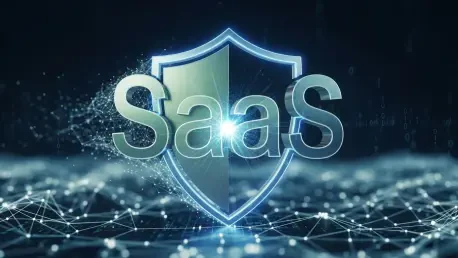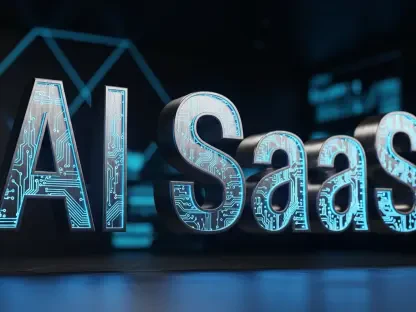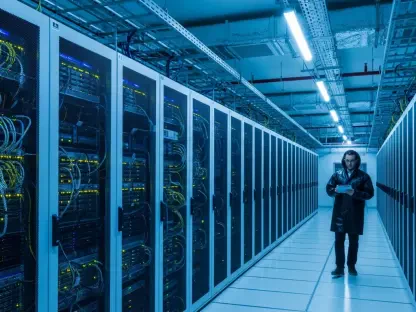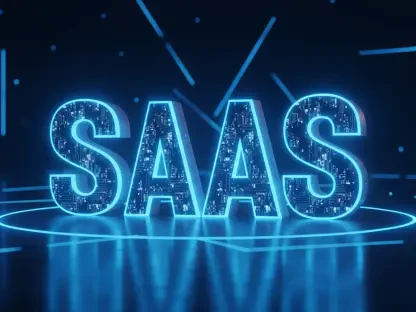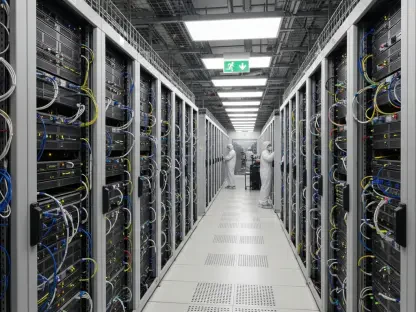Overview of the SaaS Security Landscape
The software-as-a-service (SaaS) ecosystem has become a cornerstone of modern business operations, with adoption rates soaring as companies seek scalable, cost-effective solutions for their digital needs. Recent industry data suggests that over 80% of enterprises now rely on SaaS platforms for critical functions, spanning customer relationship management (CRM), marketing automation, and data analytics. This rapid growth, while transformative, has exposed a pressing challenge: how to secure an increasingly interconnected web of applications against sophisticated cyber threats.
Key segments of the SaaS market, such as CRM tools led by giants like Salesforce, marketing platforms, and analytics suites, highlight the diversity and complexity of these environments. Companies like Cloudflare have emerged as pivotal players, not just for their infrastructure services but also for their growing influence in shaping cybersecurity technologies. Their role in safeguarding data across distributed systems has become more critical as businesses integrate multiple SaaS solutions to streamline operations.
A significant concern in this landscape is the security of SaaS integrations, where data sharing between platforms creates potential vulnerabilities. The lack of robust oversight over these connections often leaves enterprises blind to risks, amplifying the chances of breaches. As reliance on SaaS continues to expand, addressing these cybersecurity gaps has become an urgent priority for businesses aiming to protect sensitive information.
Impact of Recent SaaS Breaches
Trends and Emerging Threats
Cyber threats targeting SaaS-to-SaaS connections have surged in recent years, exploiting weaknesses in app integrations that many organizations fail to monitor effectively. Attackers increasingly target downstream applications, using compromised access in one platform to infiltrate others, a tactic that has proven devastating in multi-app environments. This trend underscores the fragility of interconnected systems and the need for advanced security measures to detect and neutralize risks early.
Emerging technologies, such as machine learning for anomaly detection, offer promising avenues to counter these evolving attack methods. However, the pace of threat innovation often outstrips defensive capabilities, leaving gaps that cybercriminals exploit. Market drivers, including the widespread adoption of SaaS solutions across industries, further fuel the urgency for security providers to innovate and address these vulnerabilities.
The opportunity for security innovation is vast, with demand growing for tools that can provide real-time insights into data flows and app interactions. As enterprises integrate more SaaS platforms, the attack surface expands, creating a pressing need for solutions that can secure complex ecosystems. This dynamic has positioned cybersecurity as a critical area for investment and development in the coming years.
Insights and Industry Implications
High-profile incidents, such as the Salesloft breach, have exposed the cascading effects of interconnected SaaS applications, where a single point of failure led to widespread data exposure. In that case, unauthorized access to one app enabled attackers to navigate through integrated platforms, compromising sensitive customer information. Such breaches serve as stark reminders of the systemic risks embedded in SaaS ecosystems.
The financial and reputational fallout from these incidents is substantial, with industry estimates suggesting that data breaches cost enterprises millions in direct losses and long-term brand damage. Analyst reports warn that the average cost of a breach continues to rise, driven by regulatory fines and customer distrust. These consequences highlight the high stakes involved in securing SaaS environments against increasingly sophisticated threats.
Looking ahead, the potential for risk escalation looms large if vulnerabilities in app integrations remain unaddressed. Without proactive measures, the interconnected nature of SaaS platforms could amplify the impact of future breaches, affecting not just individual companies but entire supply chains. This reality calls for a paradigm shift in how businesses approach cybersecurity within their digital operations.
Challenges in Securing SaaS Ecosystems
The primary hurdle in securing SaaS platforms lies in the lack of real-time visibility into data flows across multiple applications. Many enterprises struggle to track how information moves between interconnected tools, creating blind spots that attackers can exploit. This opacity complicates efforts to identify and respond to threats before they cause significant harm.
Technological challenges further compound the issue, particularly in ensuring secure API integrations that form the backbone of SaaS ecosystems. The complexity of managing multi-app environments often overwhelms IT teams, especially when resources are constrained. Market pressures, such as the need to adopt new tools rapidly, can also lead to security being deprioritized in favor of operational efficiency.
Potential solutions, such as automation and centralized control systems, offer hope for mitigating these risks. By automating threat detection and response processes, businesses can reduce the burden on human resources while improving reaction times. Centralized platforms that provide a unified view of data interactions could also empower enterprises to strengthen their defenses against evolving cyber threats.
Regulatory and Compliance Considerations
The regulatory landscape surrounding SaaS security is complex, with laws like the General Data Protection Regulation (GDPR) and the California Consumer Privacy Act (CCPA) imposing strict requirements on data protection. These regulations mandate transparency and accountability in how information is handled, posing significant challenges for companies operating in multi-app environments. Non-compliance can result in hefty penalties and reputational damage.
Maintaining compliance is particularly difficult without clear data provenance, as tracking the origin and movement of information across SaaS platforms remains a technical hurdle. Visibility tools that provide detailed logs and monitoring capabilities are essential for meeting regulatory standards. Such solutions enable businesses to demonstrate adherence to legal requirements and protect against potential violations.
Cloudflare’s newly introduced tools aim to support compliance by enforcing encryption standards and offering granular monitoring of data interactions. These features help enterprises maintain control over sensitive information, ensuring that data-sharing practices align with regulatory expectations. By integrating compliance-focused capabilities, Cloudflare addresses a critical need in the market for security solutions that balance innovation with legal obligations.
Future Directions in SaaS Security
The future of SaaS security is poised to be shaped by emerging technologies like secure access service edge (SASE) architectures, which emphasize centralized control and distributed enforcement. SASE offers a framework for securing cloud-based applications by integrating network and security functions, a model that could redefine how enterprises protect their digital assets. This approach aligns with the growing need for scalable, adaptive defenses.
Potential disruptors, such as advanced threat tactics leveraging artificial intelligence, pose new challenges that could outpace current security measures. Enterprises also face evolving needs for integrated solutions that can seamlessly protect complex workflows across multiple platforms. Addressing these demands will require continuous innovation and collaboration among industry stakeholders to stay ahead of cybercriminals.
Cloudflare’s proactive stance in shaping industry standards positions it as a leader in this space, with its focus on Zero Trust principles and cutting-edge tools influencing broader market trends. The interplay of innovation, regulation, and global business dynamics will likely drive significant growth in SaaS security investments from 2025 to 2027. This trajectory suggests a future where robust, adaptive security frameworks become integral to enterprise success.
Final Thoughts and Strategic Outlook
Reflecting on the insights gathered, it is evident that the SaaS security landscape has reached a critical juncture, with recent breaches exposing deep vulnerabilities in interconnected systems. Cloudflare’s response through innovative Zero Trust tools marks a pivotal moment, offering enterprises a pathway to mitigate risks that have previously gone unchecked. The urgency to address these challenges has never been clearer, as the cost of inaction continues to mount.
Looking back, the discussions around regulatory compliance and emerging technologies like SASE underscore the multifaceted nature of securing SaaS ecosystems. Businesses are encouraged to take actionable steps by prioritizing investments in visibility tools and automation to safeguard data flows. Partnering with forward-thinking providers like Cloudflare could further enhance resilience against evolving threats.
As a final consideration, enterprises are urged to view SaaS security not as a standalone issue but as part of a broader digital transformation strategy. Adopting integrated security platforms and fostering a culture of proactive risk management emerge as essential next steps. These efforts promise to build a stronger foundation for navigating the complexities of modern cybersecurity landscapes in the years to come.
